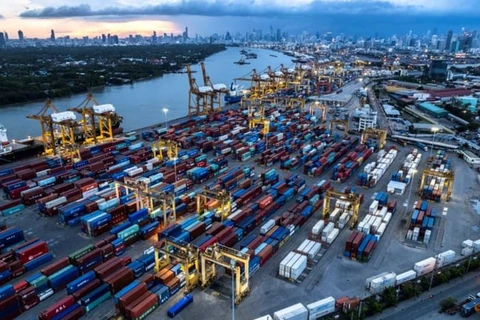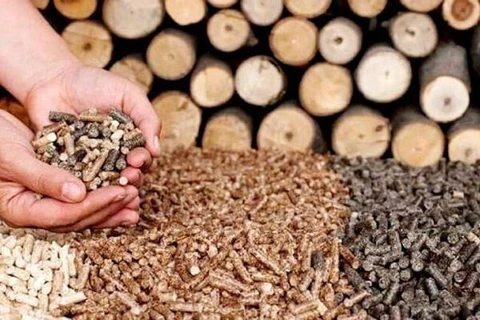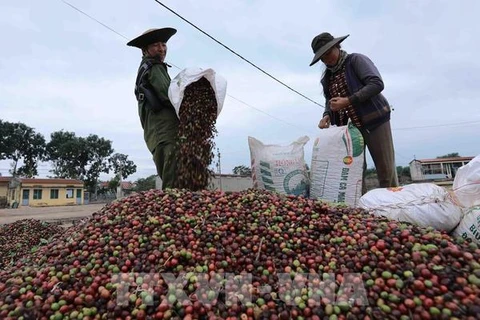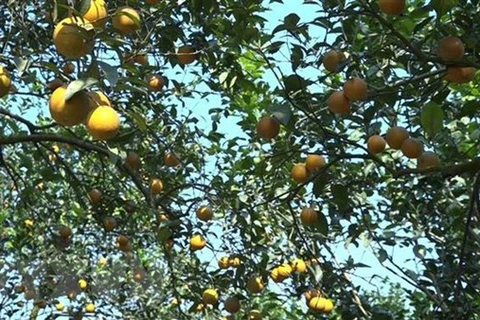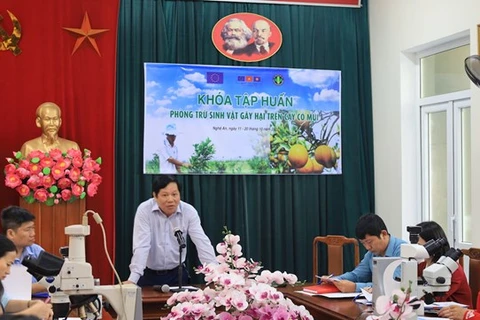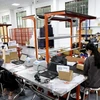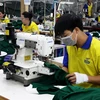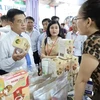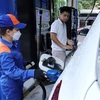Hanoi (VNA) – Although Vietnam enjoyed a high trade surplus in the first nine months of this year, numerous difficulties and challenges lie ahead for export activities in the rest of the year, while many large exporters are showing signs of staying still.
According to the Ministry of Industry and Trade, in the first-nine period, import-export turnover increased by 15.1% to 558.5 billion USD, with a trade surplus of 6.52 billion USD.
However, in September, export revenue reached only 29.94 billion USD, down 14.3% year on year.
The ministry held that the reason behind the situation was the slow economic recovery in some of Vietnam's major trade partners, where consumers tend to tighten their spending.
Meanwhile, many garment and textile, footwear, wooden furniture and handicraft exporters have reported a drop in orders, likely to prolong until the beginning of next year.
Truong Van Cam, Vice President and General Secretary of the Vietnam Textile and Apparel Association (VITAS), said that the GDP growth of major export markets of Vietnam, such as the US, EU, Japan and the Republic of Korea, was below expectation. At the same time, high inflation has strongly affected people's lives and reduced their demands.
Dang Phuc Nguyen, General Secretary of the Vietnam Fruit and Vegetables Association (VinaFruit), said that in the first nine months of this year, vegetable exports reached only 2.45 billion USD, falling over 11% year-on-year.
He held that despite the surge in many markets in the period, a downturn in the Chinese market could drag the export revenue for the whole year down sharply.
Meanwhile, the interruption of supply chains and the increasing logistics costs have slowed the recovery of trading activities. The prices of strategic and necessary products such as petrol, gas and food, as well as production materials, have continued to rise, affecting the development of a number of industries.
Nguyen Thu Oanh, head of the Price Statistics under the General Statistics Office, said that fuel and material prices are still high. In contrast, the country has been dependent on importing many products, resulting in high production costs and high product prices.
Particularly, the shortage of labourers in some businesses after COVID-19 is also a great challenge amid many industries' efforts to increase production for the rest of the year.
Representatives from State management agencies also pointed to many other challenges from the pandemic's impacts and supply chain interruptions, which are forecast to worsen in the rest of the year.
For an economy with a high level of openness like Vietnam, impacts from the outside and its economy itself will be huge obstacles to achieving common goals.
Dr Nguyen Minh Thao, head of the Central Institute for Economic Management (CIEM) 's Business Environment Research, said that for some markets, especially the European countries and the US, the technical barriers are tough for many Vietnamese businesses. This requires stronger support from the Government, Thao said.
Assoc. Prof. Dr. Dinh Trong Thinh, a lecturer from the Finance Academy, said that the rise in US dollar price would benefit export activities, as more than 70% of the signed export contracts use USD as means of payment.
Amid this situation, Thinh underlined that it is crucial to maintain the stability of the exchange rate between VND and USD.
In particular, challenges from trade remedies that many countries have imposed on exports, including anti-dumping, anti-subsidy and self-defence lawsuits, along with risks from trade fraud, have forced businesses to actively update information to give a timely response plan, especially in the year-end period when import and export activities are accelerated./.

